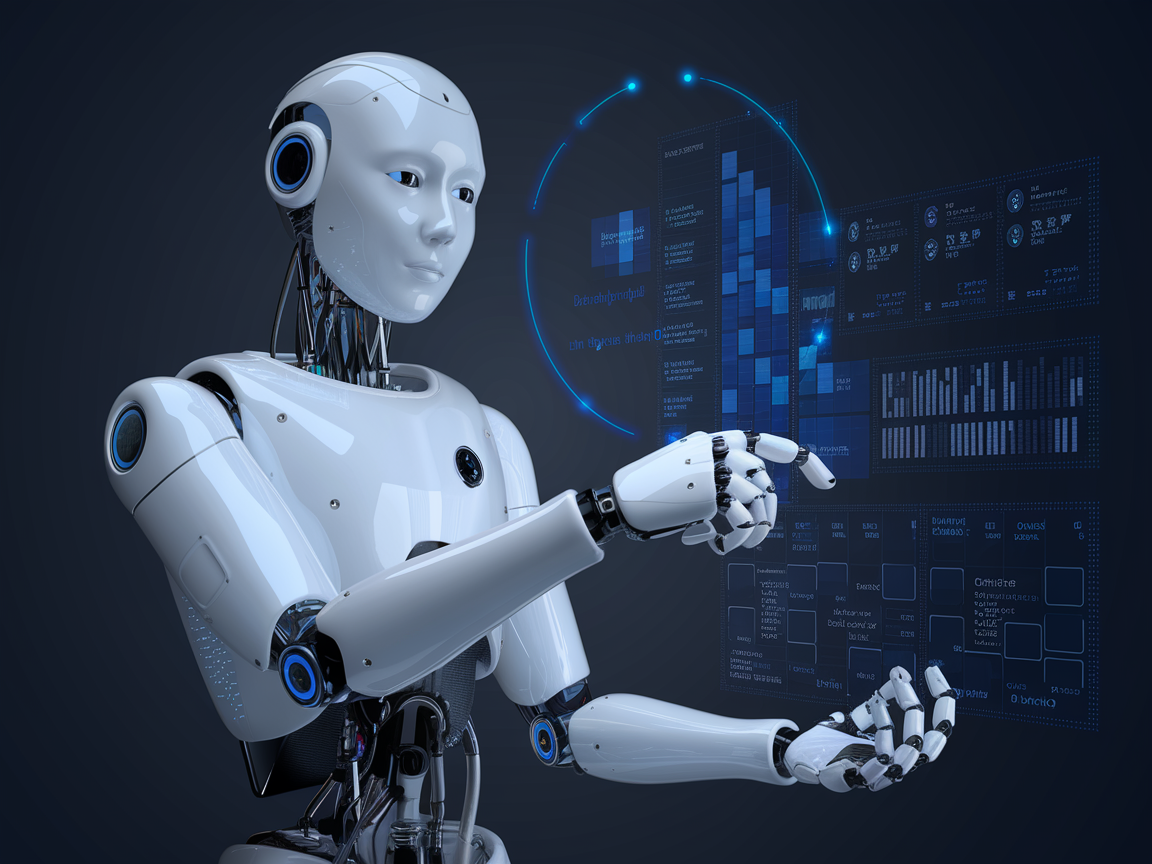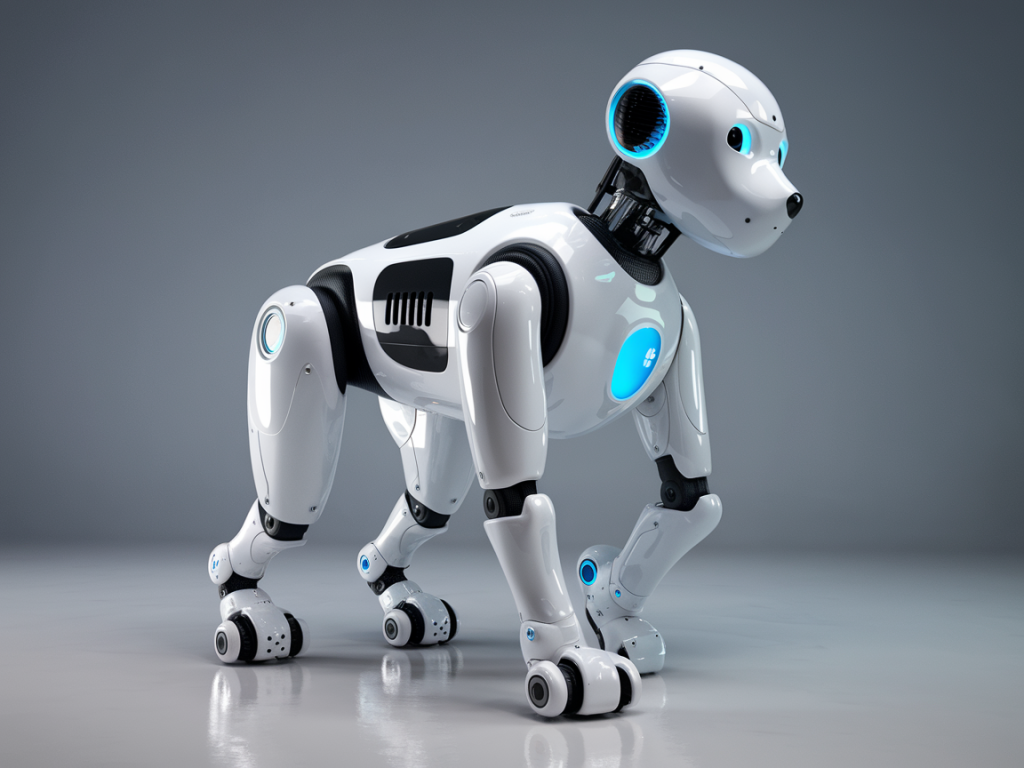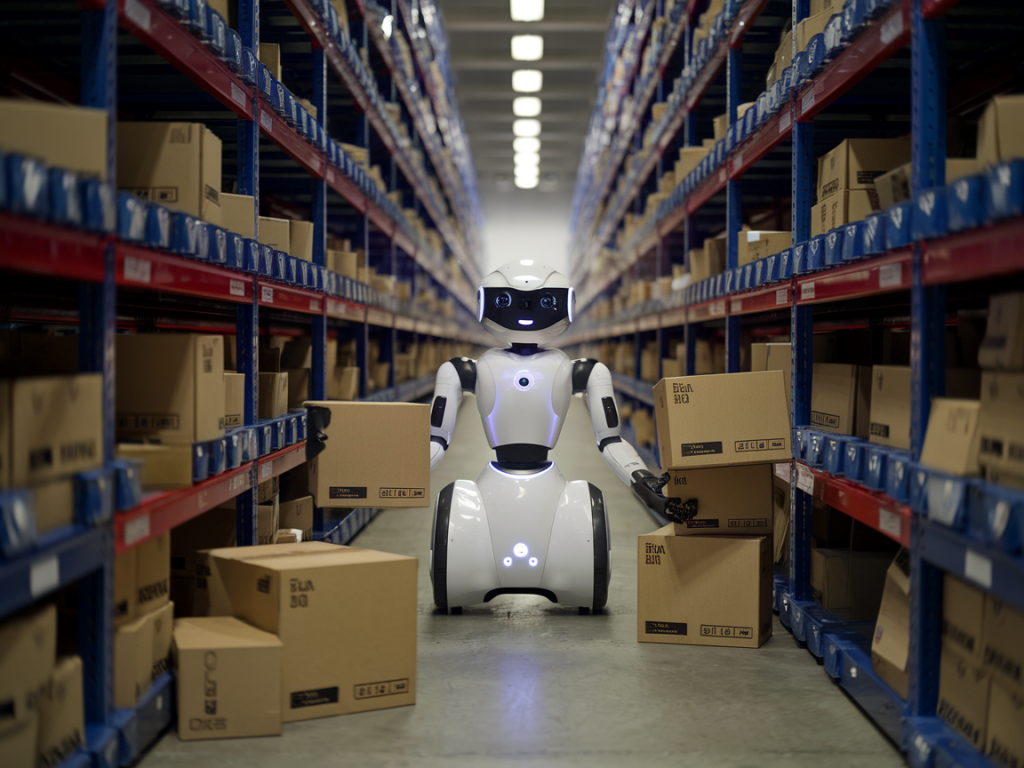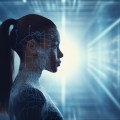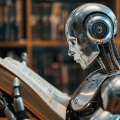The rapid evolution of artificial intelligence (AI) has fundamentally reshaped industries, economies, and societies. As we stand on the cusp of further advancements, the question remains: what does the future hold for AI? This article delves into the anticipated developments in AI, mainly focusing on AI robots, the following stages of AI development, and the role of pioneering companies like Tesla in shaping this future.
The AI Future: A New Era of Possibilities
The AI future promises a new era characterized by unprecedented possibilities. AI’s potential to transform industries is immense, ranging from healthcare and finance to transportation and entertainment. As AI systems become more sophisticated, they are expected to surpass human capabilities in various domains, leading to a paradigm shift in how tasks are performed and decisions are made.
One of the most significant aspects of AI’s future is its ability to process and analyze vast amounts of data at incomprehensible speeds. This capability will enable organizations to derive insights and make informed decisions with unparalleled accuracy. Moreover, AI’s ability to learn and adapt over time will lead to creating systems that can autonomously improve their performance, further enhancing their value.
AI Next Development: Beyond Narrow AI
Currently, most AI applications are considered “narrow AI,” designed to perform specific tasks such as image recognition or natural language processing. However, the subsequent development in AI aims to transcend these limitations, moving towards “general AI” or “strong AI.” General AI refers to systems that can understand, learn, and apply knowledge across various tasks, much like humans.
General AI will require significant advancements in machine learning algorithms, computational power, and data availability. Researchers are exploring novel approaches such as neuromorphic computing, which mimics the human brain’s neural architecture, and quantum computing, which promises exponential increases in processing power. These developments could accelerate the transition to general AI, unlocking new opportunities and challenges.
AI Robots: The Rise of Intelligent Machines
AI robots represent one of the most tangible manifestations of AI’s future. These intelligent machines are increasingly integrated into various sectors, from manufacturing and logistics to healthcare and domestic environments. The next generation of AI robots is expected to be more autonomous, capable of complex decision-making, and equipped with advanced sensory capabilities.
In manufacturing, AI robots are poised to revolutionize production processes by enhancing efficiency, reducing errors, and enabling mass customization. In healthcare, robotic systems powered by AI can assist in surgeries, perform diagnostics, and even provide companionship to patients. Integrating AI robots into everyday life is gaining momentum, with smart home devices and personal assistants becoming more prevalent.
However, the rise of AI robots raises important ethical and societal questions. As these technologies continue to evolve, concerns about job displacement, privacy, and the ethical treatment of autonomous machines must be addressed. Policymakers, technologists, and ethicists must collaborate to ensure that the deployment of AI robots benefits society.
Tesla’s Optimus: A Glimpse Into the Future of Automation
Tesla, the visionary company led by Elon Musk, is not just about revolutionizing electric cars and energy storage; it’s also setting its sights on the future of robotics. In recent years, the world has seen the unveiling of Tesla’s humanoid robots, which signal the next phase of Musk’s ambition to intertwine advanced AI with everyday life. These robots, presented as part of Tesla’s AI Day events, are designed to assist in a variety of industries, performing tasks that range from mundane labor to potentially intricate operations.
At the heart of Tesla’s robotic advancements is Optimus, a humanoid robot that bears the design ethos of Tesla’s sleek and minimalistic approach. This bipedal robot stands at around 5 feet 8 inches tall and weighs approximately 125 pounds. Built to mirror human movement and capabilities, Optimus is a general-purpose robot designed to handle a wide array of tasks — both in the household and in industrial settings.
Powered by artificial intelligence developed in-house by Tesla, Optimus is intended to operate in environments designed for humans. Its design focuses on navigating spaces like homes, warehouses, and factories, performing physical labor such as lifting and carrying objects, which has the potential to alleviate the burden of repetitive tasks on human workers.
Tesla’s robot is driven by some of the most advanced AI technologies in the world. Leveraging the same AI that powers Tesla’s autonomous vehicles, the robot is equipped with a real-time navigation system, allowing it to move through its surroundings safely and efficiently.
Key technical highlights include:
Human-like agility: Optimus is designed with actuators that simulate human muscle movement, enabling it to perform dynamic motions such as walking, crouching, and manipulating objects.
AI-driven decision making: Tesla’s neural networks give Optimus the ability to recognize objects, plan tasks, and avoid obstacles in real time, akin to the decision-making processes used by Tesla cars.
Safety and strength: Although lightweight, Optimus has enough strength to handle manual labor, potentially carrying objects up to 45 pounds. Despite this strength, safety is a priority, with the robot designed to move at a speed that ensures it won’t harm humans in its vicinity.
The Vision for Tesla Robots
Elon Musk has made it clear that he sees robots like Optimus as a game-changer for labor-intensive industries. During its unveiling, Musk noted that Tesla’s robots could eventually replace human labor for dangerous, repetitive, and boring jobs, shifting human workers into roles that require creativity, problem-solving, and strategic thinking.
In Tesla’s vision, these robots may become integral to assembly lines, warehouses, or even homes, where they could assist in chores and day-to-day activities. For businesses, Optimus could help reduce operational costs, increase productivity, and address labor shortages in industries like manufacturing and logistics.
Challenges and the Road Ahead
Despite the excitement surrounding the launch of Tesla’s robots, challenges remain. For one, the practical implementation of humanoid robots in everyday tasks is complex, and it could take years before we see widespread adoption. Additionally, ethical and societal questions regarding the replacement of human workers, privacy, and the responsible use of AI must be addressed as Tesla continues its development.
Nonetheless, Tesla’s foray into robotics marks a significant milestone in the field of automation. With its cutting-edge technology and ambitious vision, Tesla is pushing the boundaries of what robots can do, offering a glimpse of a future where humans and robots collaborate in unprecedented ways.
Tesla’s newly presented Optimus robots, led by the development of Optimus, represent the company’s bold step into the world of AI and automation. While still in the early stages of development, these robots have the potential to transform industries and improve daily life by performing tedious and repetitive tasks. As Tesla continues to refine this technology, we are likely witnessing the beginning of a new era in robotics, one that could revolutionize the way we live and work.
Challenges and Opportunities in the AI Future
While the AI future holds immense promise, it also presents significant challenges. Ensuring the ethical use of AI, addressing biases in AI systems, and safeguarding privacy are critical issues that must be addressed. Developing robust regulatory frameworks and industry standards will be essential to mitigate potential risks and ensure that AI technologies are used responsibly.
Moreover, the rapid pace of AI development necessitates focusing on education and workforce adaptation. As AI systems take on more tasks traditionally performed by humans, there will be a growing need for reskilling and upskilling to prepare the workforce for new roles and opportunities. Educational institutions and organizations must collaborate to develop programs that equip individuals with the skills to thrive in an AI-driven world.
Despite these challenges, AI presents vast opportunities in the future. AI has the potential to drive economic growth, enhance global competitiveness, and improve quality of life. By harnessing the power of AI, industries can achieve greater efficiency, innovation, and sustainability.
Conclusion: Embracing the AI Future
As we look towards the AI future, it is clear that the following developments in AI, the rise of AI robots, and the contributions of companies like Tesla will play a pivotal role in shaping the world. While challenges exist, the potential benefits of AI are too significant to ignore. By fostering collaboration, innovation, and ethical considerations, we can navigate the complexities of the AI future and unlock its full potential for the betterment of society.
In conclusion, the AI future is not just a vision; it is an unfolding reality that promises to transform the way we live, work, and interact. Embracing this future requires a collective effort to ensure that AI technologies are developed and deployed in a manner that aligns with our values and aspirations. With careful planning and thoughtful execution, the AI future can force positive change, driving progress and prosperity for future generations.
